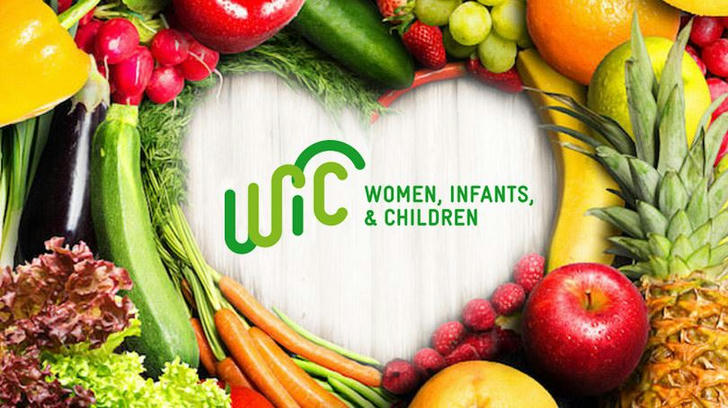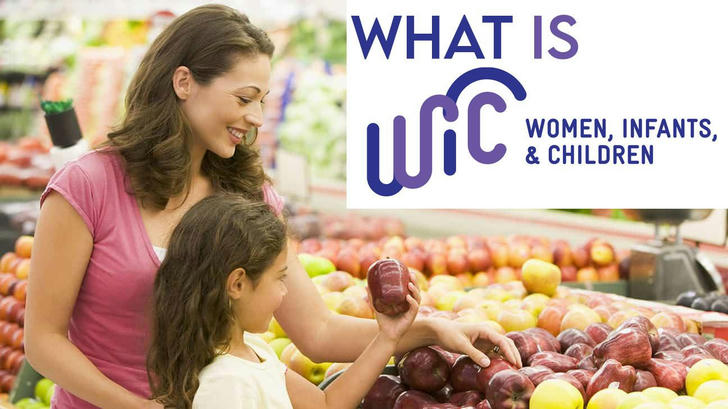WIC Program: Provides necessary nutritional support for low-income families, quick application, and improved quality of life.
In the United States,many low-income families face food insecurity and malnutrition, especially pregnant women, infants and young children, whose health and development are particularly vulnerable. Fortunately, the WIC program (Women, Infants, and Children) helps this group improve their diet quality and health. However, many eligible people have not yet applied. The following will take you to understand the benefits, application conditions and processes of the WIC program, and help you master how to use this valuable resource to bring better health protection for yourself and your family.

What is WIC?
The WIC (Women, Infants, and Children) program is a welfare program of the U.S. federal government to provide nutritional support for low-income women, infants and children. The program aims to improve the nutritional status of pregnant women, breastfeeding women and children under 5 years old by providing food subsidies, nutrition education and health services.
Benefits provided by WIC
The core benefits of the WIC program include the following aspects:
1.Food subsidies
WIC provides special food subsidies to eligible families to help them obtain specific nutritious foods. These food subsidies usually include:
•Infant food: such as infant formula, rice cereal, fruit puree, etc.
•Maternal and infant food: such as milk, eggs, whole wheat bread, vegetables, fruits, juice, beans, etc., mainly used to provide necessary protein, vitamins, minerals, etc.
•High iron and calcium supplementation: In order to ensure that pregnant women, breastfeeding women and infants get adequate nutrition, WIC provides specially designed nutritional supplementary foods.
2.Nutrition education
The WIC program not only provides food, but also emphasizes nutrition education. Through professional nutritionists, WIC provides applicants with guidance on how to choose and prepare healthy meals. This service helps families understand how to make nutritious dietary choices within a limited budget.
3.Health screening and advice
WIC also provides health checks and guidance to ensure that the health of applicants and their family members is monitored. Through regular health checks, malnutrition, anemia or other health problems can be discovered and resolved in a timely manner. In addition, WIC also provides services such as vaccinations and breastfeeding support.
Who can apply for WIC?
Applicants for the WIC program must meet specific eligibility requirements. Here are the main eligibility criteria:
1.Identity and age requirements
Pregnant women, breastfeeding women (within 6 months of birth), and non-breastfeeding women (within 6 months of birth of a newborn).
Infants: Infants 0-12 months old can receive WIC food subsidies.
Children: Children 1-5 years old can also apply.
2.Income requirements
The WIC program targets low-income families. Generally, family income must not exceed 185% of the federal poverty line. However, states may have slightly different income standards, which can be found through local WIC offices.
3.Residency requirements
Applicants must be residents of the state or region where they live. WIC is a local program, so you must apply in your state or region.
4.Health or nutritional risks
In addition to income and family composition requirements, WIC also requires applicants to have some nutritional risks. For pregnant women and children, nutritional risks may include anemia, malnutrition, low birth weight, etc. Infants and children may also qualify because of growth problems in weight and height.

How to apply for WIC?
The process of applying for WIC is relatively simple and usually includes the following steps:
1.Find a local WIC office
Each state or local government has a WIC office. Applicants can visit the WIC official website or call the relevant hotline to find the WIC service center closest to them.
2.Submit application materials
Applicants need to provide the following basic materials:
Proof of identity (such as ID card, birth certificate, etc.).
Proof of income (such as payroll, tax report, etc.).
Proof of residence (such as utility bills, lease contract, etc.).
Personal health records, health screening may be required (such as weight, height, blood test, etc.).
3.Interview and screening
WIC staff will interview the applicant to ensure that he or she is eligible and conduct a simple health screening. After passing the screening, the applicant will be informed whether he or she can receive WIC benefits.
4.Get food subsidies
After the application is approved, WIC will provide a food subsidy card, usually in the form of an electronic benefit card (EBT card), and the applicant can use this card to purchase food that meets WIC requirements.
Real case: WIC program helps families overcome difficulties
Case 1: Maria's experience - a single mother overcomes difficulties
Maria is a single mother living in New York City and has just become pregnant. Her family income is low and below the poverty line. After learning about the WIC program, Ms. Li went to the nearest WIC office to apply. The staff helped her complete the relevant health screening and confirmed that she met the criteria for nutritional risks for pregnant women. By submitting the necessary materials (such as proof of income and proof of residence), Ms. Li successfully passed the application and received monthly food subsidies, including milk, eggs, fresh fruits and vegetables. In addition, she also participated in the nutrition education course provided by WIC and learned how to prepare nutritious meals for herself and her unborn baby.
Case 2: Tom's family story
Tom, his wife and 3-year-old son live in California with a low family income. Tom's son was found to have mild anemia during a physical examination, and the doctor recommended that they apply for the WIC program for nutritional support. After screening, Tom's family passed the WIC application and received food subsidies including iron-fortified foods, whole wheat bread and vegetables. With the help of WIC, Tom's son's anemia has improved, and the whole family has learned how to choose healthier foods.
Conclusion:
The WIC program is a valuable resource provided by the US government to help low-income families, especially pregnant women, infants and children. By providing food subsidies, nutrition education and health support, WIC not only helps families cope with food insecurity, but also promotes the healthy development of mothers, infants and children. For eligible families, applying for WIC in a timely manner can not only obtain material assistance, but also enjoy more health resources and support, which is an important way to improve the quality of life.
